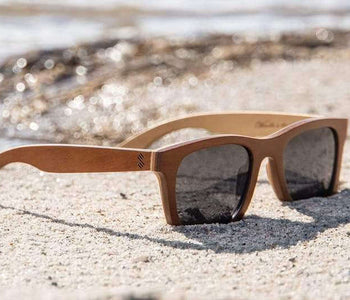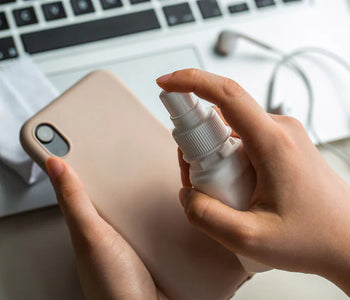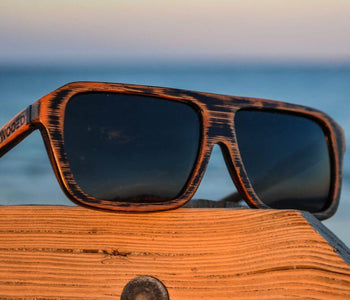The iPhone 12, the first with 5G, is the fastest 5G smartphone

October 2020
(Mobile, Consumer, Tech)
Chloe, Senior Contributor
WUDN Customer Service, and a massive Apple geek
The iPhone 12, the first with 5G, is the fastest 5G smartphone
The iPhone 12 is the fastest. No question about it. The bad news: To see or use those 5G speeds, you must be close enough to hit the tower with a rock and then stand very still. Seriously. After finding your carrier’s high-speed enabled tower, stand very close, outside, tap download, then don’t move a muscle.
Despite being marketed as our technological savior, 5G—the next generation of cellular connectivity—isn’t a killer feature for the new iPhone 12 models. At least not in the U.S., not yet. Don’t get me wrong: The cellular speeds can be insanely fast. In some tests, it’s up to 30 times faster than my home broadband. Just bring a power pack be-cause 5G is a battery drain.
It’s best to think of 5G as an invisible feature—some- thing that might one day come in handy.
That said, I’ve aimed my 5G testing and assessment at those who have been holding on to iPhones that are in the iPhone 8, X and XS families—that is, phones that are two or three years old by now. And yes, I’m also talking to readers I’ve heard from who are still clinging to a prehistoric iPhone 6 or 7.
If you’re due (or overdue) for an upgrade, opting for an iPhone 12 is a no-brainer.
There are Two Flavors of 5G. One Tastes Better Than the Other
To really understand why you won’t see hair-on-fire speeds when you get a new iPhone 12, you first have to know the two types of 5G in the U.S.:
Millimeter wave: “I’m going to the Verizon 5G pole, honey. Be back soon!” This is my life when testing, because the fastest 5G doesn’t come to you. You go to it. Named after its high radio frequencies, this is the blazing-fast connection Apple was bragging about during its event.
In Boise, when testing Verizon’s Ultra Wide Band network, I saw download speeds as high as 3,000 megabits per second— that’s 3 gigabits! Scary Fast speeds. Way faster than what I can get inside my house, and I have fiber.
Yet I could only do all that when standing, pretty much, right next to the tower. When I’m inside the house, I can only get 4G. This type of 5G can’t travel long distances, and obstacles like trees and walls will slow it down. Verizon, T-Mobile and AT&T are putting up millimeter-wave cells in bigger cities and in public spots like stadiums and parks.
Sub-6 5G: Named for frequencies under 6 GHz, this isn’t as fast but provides far wider indoor and outdoor coverage. T-Mobile and AT&T have large sub-6 foot- prints; Verizon just announced what it calls “Nationwide 5G. ”The issue? This sort of 5G isn’t always better than 4G. Throughout the week, I saw speeds ranging from 30 Mbps to 160 Mbps on both Verizon and T-Mobile’s sub-6 networks. Sometimes the iPhone 11 Pro’s Verizon 4G connection would get the same speeds.
Even when you’ve got the blazing fast speeds, what can you do with it? I downloaded the first two seasons of “Game of Thrones” (about 4 GB) in less than 4 minutes on Netflix and Apple TV. Speedier than my home broadband network, that’s for sure. Yet it took 4 minutes to pull down just one episode on Amazon Prime Video. Download time can depend as much on the service you’re using as it does the speed of your network. Plus, the iPhone 12 got uncomfortably warm during those downloads. To the point where I had to put it down.
Of course, there’s a price for this speed. Literally. Verizon required me to upgrade to a top unlimited plan to get the UWB service. And then there’s the battery drain. Downloading those episodes on Verizon’s UWB network used 15% of my battery. That’s why Apple included a Smart Data Mode. Enabled by default, it uses only that high-speed network if it detects you need it. Most people won’t be on superfast 5G, and will find the battery life on these phones to be solid. They lasted a full day of fairly heavy use—though fell a bit shorter than the iPhone 11, which consistently leaves me with at least 15% before bed time.
A lot of this is just 5G growing pains. The carriers and Apple are betting that as the networks expand, and phones get into more hands, we’ll see apps and services we can’t yet imagine—just as 4G enabled the likes of Uber and Instagram.
If and when that happens, iPhone 12 owners will be ready. In the meantime, they’ll have a pretty great iPhone.
Understanding Wood Accessory Lifespan | A Complete Guide for Everyday Users
Furniture made of wood is something whose allure is everlasting. Whether it is a wooden phone case, a pair of wooden sunglasses, a special wooden hip flask, or any other...
Read moreAre Wooden Sunglasses Durable? A Simple Guide for Everyday Users
As soon as individuals learn about the wood-based sunglasses, one big question comes to their mind. Are wooden sunglasses durable? It is a fair question. Wearing wooden frames may be...
Read moreExpert Guide: How to Clean a Wood Phone Case and Keep It Beautiful for Life
There is a distinct attachment when you touch a wooden phone case. It offers the touch of warmness which is impossible to find in plastic. When you have a well-designed...
Read moreAre Wooden Sunglasses Durable? A Simple Guide for Everyday Users
As soon as individuals learn about the wood-based sunglasses, one big question comes to their mind. Are wooden sunglasses durable? It is a fair question. Wearing wooden frames may be...
Read more




